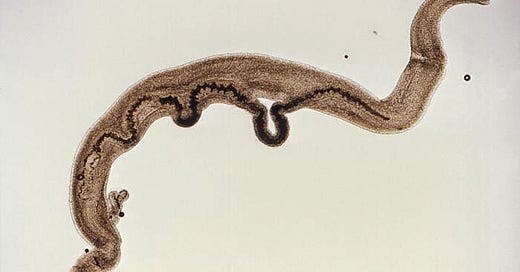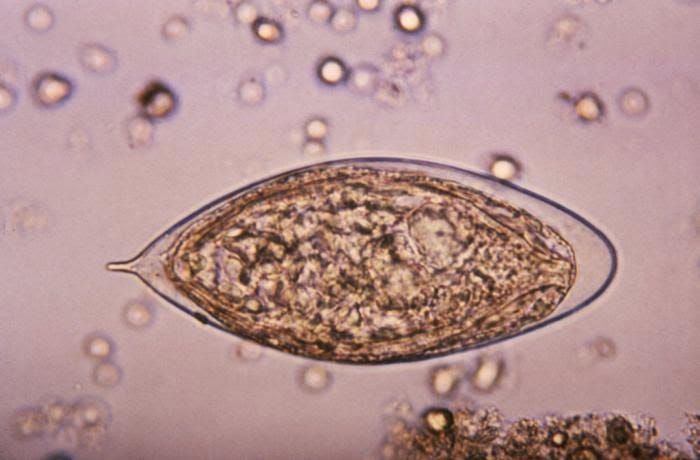Parasitology 101 is an educational blog that that can be used as a study guide for microbiology, infectious disease and medical technology students. The “bullet-point” format keeps the information concise and to the point.
General Information
Trematodes from the genus Schistosoma that live in the blood vessels of humans and other mammals
Adults have separate sexes (different from other trematodes)
Disease called schistosomiasis or Bilharziasis, named after Theodore Bilharz
Can cause acute and chronic disease, a disease-complex
Most important helminth infection in terms of worldwide distribution, prevalence and morbidity
Sometimes considered a “man-made” disease with the construction of hydroelectric dams and irrigation systems in developing nations
The three most important human species are Schistosoma mansoni, S. haemotobium and S. japonicum
Geography
S. mansoni is found in Africa (including Madagascar), the Arabian Peninsula, Brazil, Suriname, Venezuela and some Caribbean islands
S. haemotobium is found in Africa and the Middle East
S. japonicum is found in China, the Philippines and parts of Indonesia
Subscribe to Outbreak News TV on YouTube
Morphology (adults)
Separate sexes
Cylindrical in shape
Male: short (10-20 mm in length) with copulatory groove
Female: Long and slender (20-26 mm in length)
Morphology (eggs)
S. mansoni: 180 um x 80 um, developed miracidium and a large lateral spine
S. haemotobium: 160 um x 80 um, developed miricidium and a large terminal spine
S. japonicum: 80 um x 60 um, developed miricidium and a small lateral knob (spine)
Life Cycle
Eggs laid in blood vessels, pass from vessels into tissue, some reach the intestine or bladder, excreted in the feces or urine
Eggs that reach freshwater, miricidia hatches, swims to find appropriate snail host (intermediate) and penetrate
In the snail- two generations of sporocysts> produce cercariae> cercariae migrate out of snail into water (Snail cycle requires 3-5 weeks)
Cercariae: 0.1-0.2 mm in length, fork-tailed (infective stage) swims to find human host
Penetrates through skin or mucous membranes
Loses tail upon penetration> schistosomula
Schistosomula enter peripheral veins> pass through heart, lungs to portal veins> to intestinal or bladder veins depending on species
Adults have long life span 5-7 years and up to 30 years
Eggs appear in feces or urine 1-3 months after cercarial penetration
Pathology
Itchy papular eruption during cercarial penetration
Response to antigenic and toxic secretions of larval and adult worms and eggs
Acute stage- Katayama syndrome: fever, chills , nausea, abdominal pain, marked eosinophilia, enlarged and tender liver
Daily egg outputs: S. haemotoboium 100, S. mansoni 300 and S. japonicum 1000-3500
Late complications from chronic infections include liver fibrosis, portal hypertension and its sequelae
Bowel obstruction, uropathy, superimposed bacterial infection (Salmonella) and bladder cancer
Eggs depositied in ectopic sites like brain, spinal cord
Diagnosis
Microscopic identification of eggs in stool or urine is the most practical method for diagnosis. Stool examination should be performed when infection with S. mansoni or S. japonicum is suspected, and urine examination should be performed if S. haematobium is suspected.
Kato-Katz, Ritchie technique
Antibody detection
Blood Flukes in Black and White
Treatment
Infections with all major Schistosoma species can be treated with praziquantel
Epidemiology
Exposure to contaminated freshwater that is used for agricultural, household, industrial or recreational purposes
Prevention
Prevent exposure to contaminated freshwater
Proper disposition of feces and urine
Educating the public, treatment
Molluskicides for treating snail-breeding sites








